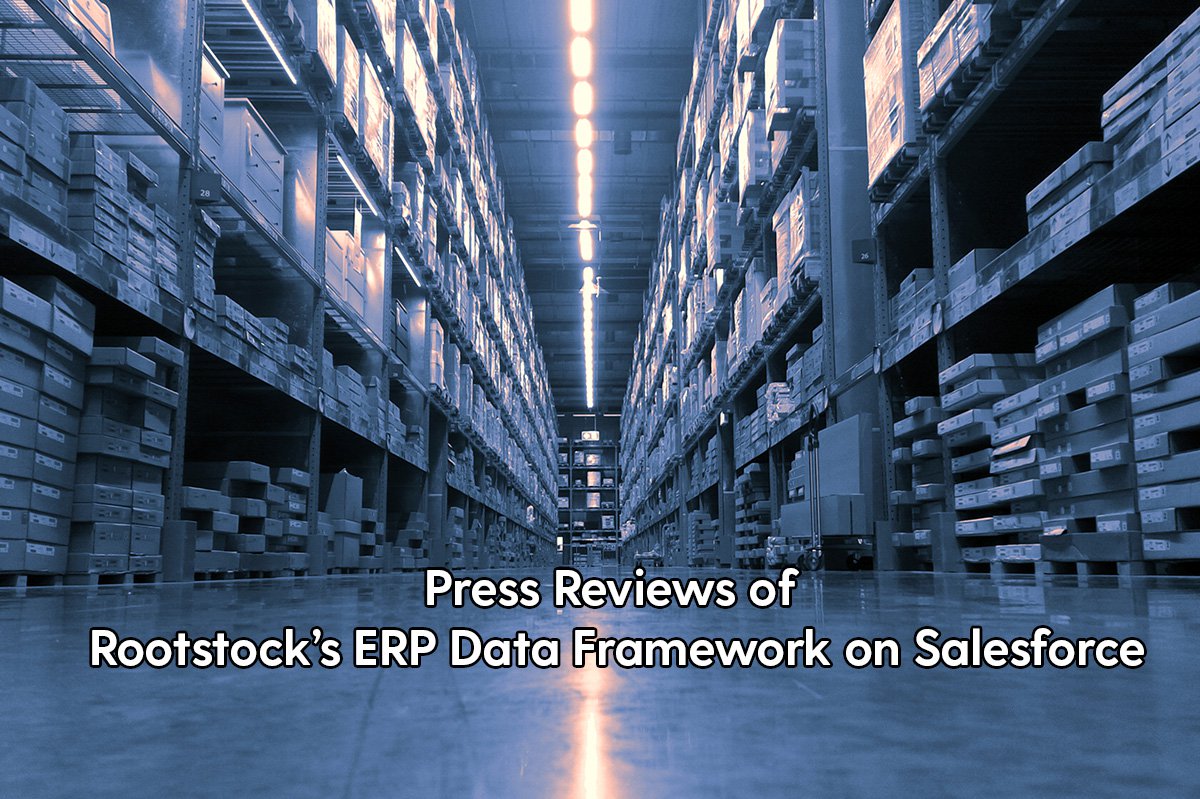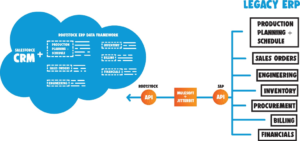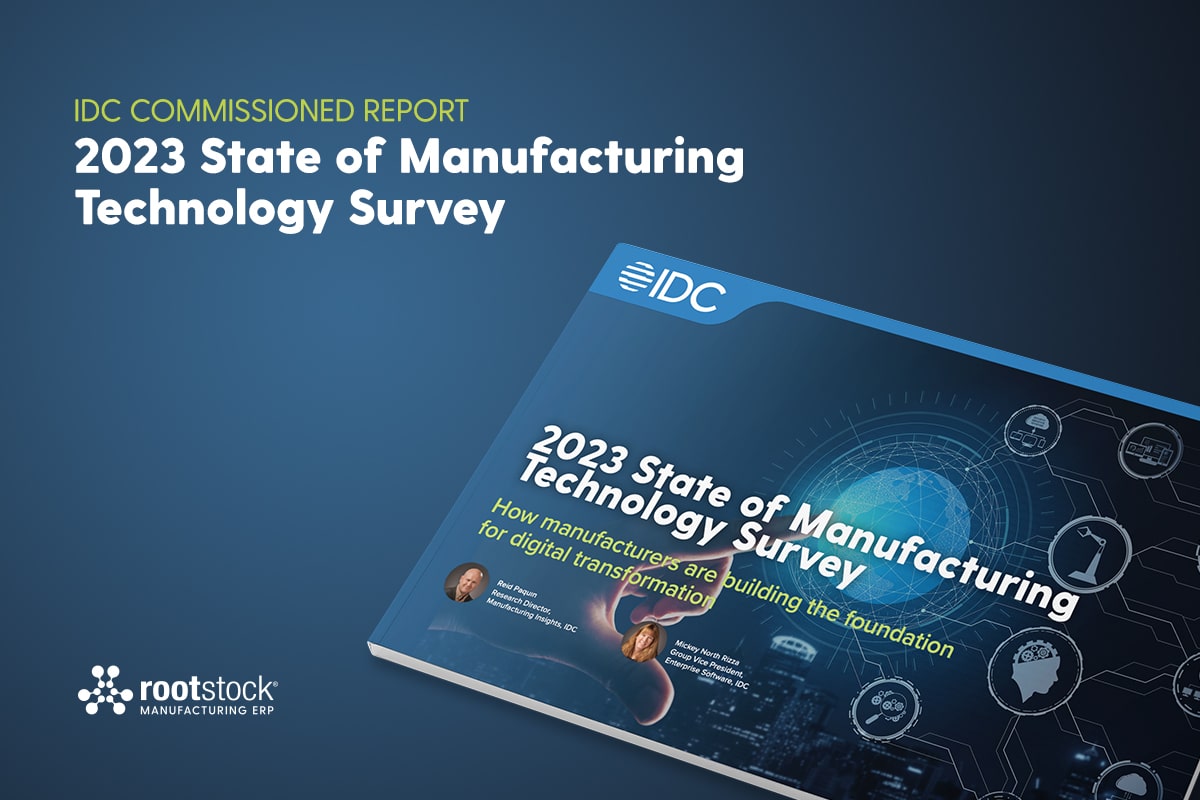We recently introduced our ERP Data Framework, a collection of pre-configured ERP data objects that allows organizations to transfer and map legacy ERP data to the Salesforce CRM software platform more easily than conventional methods. The ERP Data Framework now gives manufacturers, distributors and supply chains the flexibility to choose from multiple Rootstock ERP solutions to leverage their legacy data and take advantage of the Salesforce Platform.
The ERP Data Framework was reviewed in recent articles by writers and analysts at the Enterprise Times, Diginomica and Technology Evaluation Centers (TEC). This blog summarizes their reactions, but first, let’s take a closer look at the ERP Data Framework.
ERP Data Framework
The Rootstock ERP Data Framework eliminates the need for organizations to develop their own custom objects from scratch. Rootstock platform data objects are pre-built to match typical ERP systems, so companies can populate the Salesforce Platform through Rootstock’s API using a variety of methods, including MuleSoft or other integration tools.
Once the data is populated in Salesforce, users have a complete view of ERP information, including inventory, production schedules, costing, invoices, customer credits, returns, and other information. They can use Salesforce’s Einstein AI to work on a combined ERP and CRM data set on a single cloud platform.
Flexible ERP Options
With the addition of the ERP Data Framework, Rootstock gives companies several options for how to move from legacy to cloud ERP:
- Move only their ERP data with the ERP Data Framework: Companies can transfer only their ERP data to the Salesforce Platform, minimizing disruption of other mission-critical functions but still enjoying far greater data visibility. These firms also gain the ability to use Salesforce functions such as analytics to make better use their data.
- Upgrade their ERP system incrementally with Two Tier ERP: For many companies, incremental moves to the cloud work best, especially those who want to use Cloud ERP to manage a single business unit or process while keeping their legacy solution for the time being. These firms can implement Rootstock Cloud ERP for only those business units or processes and use Rootstock to communicate with the Legacy ERP system.
- Replace their legacy ERP system with Rootstock Cloud ERP: Many companies are abandoning their old legacy ERP systems entirely for cloud-based ERP to take advantage of the scalability, lower costs and greater efficiencies of the cloud. These are companies have the motivation, resources and wherewithal to make the full switch.
Analyst and Press Reactions
Recent articles in Enterprise Times, Diginomica and TEC to the ERP Data Framework point out the flexibility of Rootstock’s solutions, describe what it means for companies looking to move from legacy ERP and how Rootstock provides value to the Salesforce ecosystem.
In the Enterprise Times article “Rootstock offers ERP integration Framework on Salesforce,” Steve Brooks points out that the data objects and fields in the ERP Data Framework are backed by Rootstock extensive manufacturing experience. He writes, “As the only full manufacturing ERP solution on Salesforce, Rootstock has the advantage of understanding the relevant fields. This comes from its experience of developing a full manufacturing solution, migrating legacy platforms.”
Brooks also says that the Framework gives manufacturers a multi-step approach to moving to the cloud and points to the success of the solution at several companies.
In the Diginomica article, “Rootstock takes away one more excuse not to move ERP to the cloud,” Phil Wainewright thinks that the ERP Data Framework will make it easier for previously reluctant organizations to move their ERP to the cloud. “This is designed to smooth the path to the cloud for organizations that are already running their CRM systems on the Salesforce platform, which Rootstock’s cloud ERP is built on,” he writes.
The article also talks about how the increasing pressure on companies to deliver responsive service to customers is driving the need to connect ERP data to customer-facing systems. “So, Rootstock’s initiative to make it easier to connect that data is an astute move,” Wainewright says. “Not only does it serve a current need, but it also helps demonstrate what can in fact be fixed by moving that data into the cloud, thus making the case for a wholesale cloud ERP migration at a later date.”
In “Rootstock Unveils ERP Data Framework, Influencing Salesforce’s ERP Ecosystem,” TEC’s Principal Analyst PJ Jakovljevic writes how the Rootstock ERP Data Framework helps Salesforce target the manufacturing sector, especially in places like Japan. “The manufacturing, distribution, and supply chain sectors in Japan reportedly want to unify their business processes and information across CRM and ERP software to improve their agility and better serve their customers.”
The TEC article also describes the flexibility of Rootstock’s ERP solutions, and how the ERP Data Framework lets companies unlock their legacy ERP software “in a way that is right for them.” “Combined with Salesforce CRM, …companies can enjoy a full view of customers and more efficient processes across front- and back-office operations,” writes Jakovljevic.
Summary
Rootstock knows that manufacturers, distributors and supply chains can be reluctant to move from their legacy ERP systems. The addition of the ERP Data Framework gives these companies multiple paths to the cloud, as described in the articles mentioned in this post. They can leverage their ERP data for increased visibility while keeping the rest of their legacy system intact, or they can take an incremental approach by moving one or more subsidiaries or processes to the cloud. And of course, those who are ready can replace their legacy completely with Rootstock Cloud ERP.
Read the articles here:
- “Rootstock offers ERP integration Framework on Salesforce”
- “Rootstock takes away one more excuse not to move ERP to the cloud”
- “Rootstock Unveils ERP Data Framework, Influencing Salesforce’s ERP Ecosystem”
There is also a more detailed description of the three ways Rootstock can unlock legacy ERP including a short video describing the ERP Data Framework here.








